-
Welcome to BirdForum, the internet's largest birding community with thousands of members from all over the world. The forums are dedicated to wild birds, birding, binoculars and equipment and all that goes with it.
Please register for an account to take part in the discussions in the forum, post your pictures in the gallery and more.
papua new guinea
-
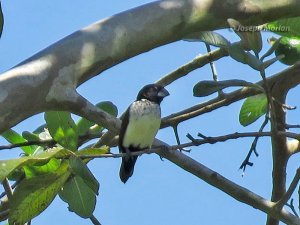
Hooded Munia
Sometimes called Hooded Mannikin or New Britain Mannikin, but name changed to avoid confusion with the New World Manakin family (Pipridae). Munias are in the Waxbill family (Estrildidae). This species is endemic to New Guinea and the Bismarck Archipelago. Three subspecies are recognized. This is...- jmorlan
- Media item
- east new britain hooded munia lonchura spectabilis spectabilis papua new guinea rabaul
- Comments: 2
- Category: Asia, Australia & Pacific Islands
-
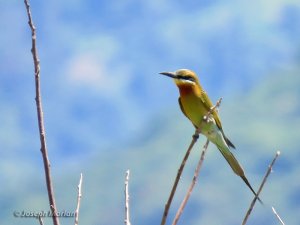
Blue-tailed Bee-eater
The blue tail and uppertail coverts help distinguish this species from the similar Blue-cheeked Bee-eater. This is an adult showing fully grown central tail spikes. Although this species is widespread in Southeast Asia, it is local and rare in New Britain. We were lucky to see this attractive...- jmorlan
- Media item
- blue-tailed bee-eater east new britain merops philippinus papua new guinea rabaul
- Comments: 3
- Category: Asia, Australia & Pacific Islands
-
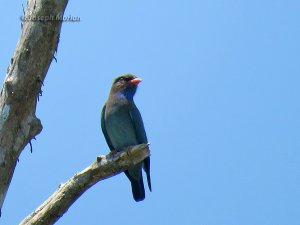
Dollarbird
This adult shows the large blue throat patch that immatures lack. This conspicuous member of the Roller family (Coraciiformes) likes to sit on exposed high perches as seen here. It sometimes goes under the name "Oriental Dollarbird." The "dollar" part of its name comes from...- jmorlan
- Media item
- eurystomus orientalis waigiouensis madang papua new guinea
- Comments: 2
- Category: Asia, Australia & Pacific Islands
-
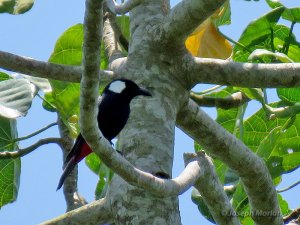
Lowland Peltops
Peltopses include two unusual New Guinea endemic species of uncertain affinities. They are currently classified in the subfamily Peltopsinae within the Woodswallows and Butcherbirds (Artamidae). In the past they have been considered members of the Monarchidae or the Cracticidae (now merged with...- jmorlan
- Media item
- madang papua new guinea peltops blainvillii
- Comments: 2
- Category: Asia, Australia & Pacific Islands
-
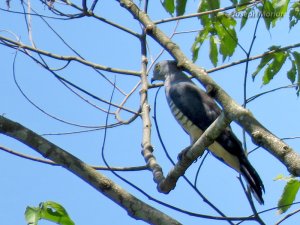
Pacific Baza
I was never able to get a clear shot of this interesting crested, slim-bodied raptor. The name "Baza" comes from the Arabic "Baz" which means hawk. Aviceda means "bird-killer." This species will take birds on occasion, but most of its diet actually consists of...- jmorlan
- Media item
- aviceda subcristata megala madang papua new guinea
- Comments: 2
- Category: Asia, Australia & Pacific Islands
-
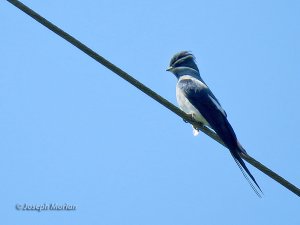
Moustached Treeswift
Although related to the true swifts, these well-dressed, long-tailed birds are in a different family, the Hemiprocnidae which comprises four species. They have very long scissor-like wings and deeply forked tail. The Moustached Treeswift is the largest of the four. It is the only treeswift that...- jmorlan
- Media item
- hemiprocne mystacea mystacea madang papua new guinea
- Comments: 3
- Category: Asia, Australia & Pacific Islands
-
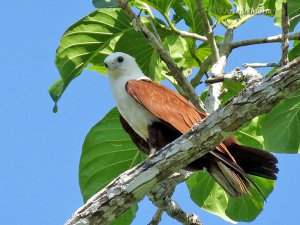
Brahminy Kite
A few of these unmistakable, majestic kites were circling the road in the company of a fairly large congregation of Black Kites (Milvus migrans). Two subspecies are found in New Guinea. This is H. i. girrenera which breeds on the main island and adjacent Australia. It has a dull olive-gray bill...- jmorlan
- Media item
- haliastur indus girrenera madang papua new guinea
- Comments: 2
- Category: Asia, Australia & Pacific Islands
-
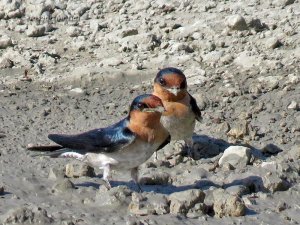
Pacific Swallow
These are adults gathering mud for their nests. This is the common swallow in most of coastal New Guinea. Of the four subspecies which occur in New Guinea, H. t. frontalis is expected breeding in northern New Guinea. This race was included with H. t. albescens of southern New Guinea before the...- jmorlan
- Media item
- hirundo tahitica frontalis madang papua new guinea
- Comments: 2
- Category: Asia, Australia & Pacific Islands
-
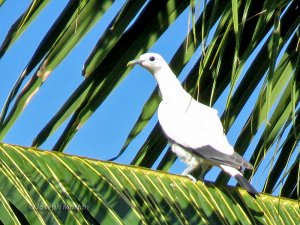
Torresian Imperial-Pigeon
These spectacular pigeons generally forage inland during the day but return to the coast to roost on offshore islands. This was part of a small flock near the port as we were returning to our ship in the late afternoon. Their distribution in New Guinea is patchy. These birds are apparently...- jmorlan
- Media item
- ducula spilorrhoa east sepik papua new guinea wewak
- Comments: 2
- Category: Asia, Australia & Pacific Islands
-
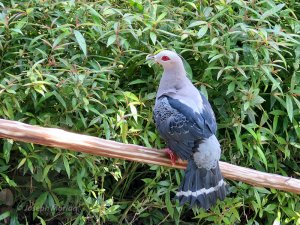
Pinon's Imperial-Pigeon
This individual was exceptionally tame but the villagers insisted it was wild. It appeared to have been adopted by the tribe as a sort of mascot. This large pigeon is endemic to New Guinea. Two subspecies are found on the main island, of which this is D. p. jobiensis characterized by whitish...- jmorlan
- Media item
- ducula pinon jobiensis east sepik maur village papua new guinea
- Comments: 3
- Category: Asia, Australia & Pacific Islands
-
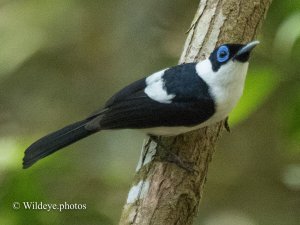
Frilled Monarch
Endemic to the forests of New Guinea- Windrider
- Media item
- arses telescopthalmus frilled monarch new guinea papua new guinea varirata national park
- Comments: 3
- Category: Asia, Australia & Pacific Islands
-
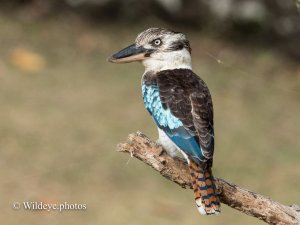
Blue-winged Kookaburra
At the Varirata National Park, Port Moresby, Papua New Guinea- Windrider
- Media item
- blue dacelo leachii kookaburra new guinea papua papua new guinea varirata varirata national park winged
- Comments: 7
- Category: Asia, Australia & Pacific Islands
-
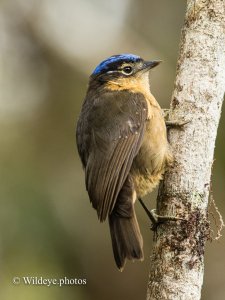
Blue-capped Ifrita
One of the few poisonous birds in the world. It acquires its poison by feeding on beetles - Mt Hagen, Papua New Guinea- Windrider
- Media item
- blue blue-capped ifrita capped ifrit ifrita ifrita kowaldi mt hagen papua new guinea poisonous
- Comments: 5
- Category: Asia, Australia & Pacific Islands
-
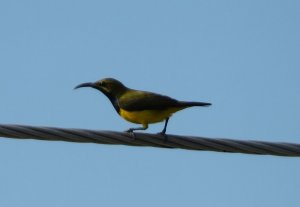
Olive-Backed Sunbird
A male olive-backed sunbird- BirdMeister01
- Media item
- cinnyris jugularis papua new guinea sunbird wewak
- Comments: 3
- Category: Asia, Australia & Pacific Islands
-
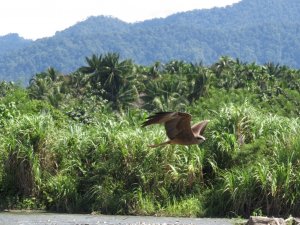
Juvenile Brahminy Kite
- BirdMeister01
- Media item
- brahminy haliastur indus kite papua new guinea
- Comments: 4
- Category: Asia, Australia & Pacific Islands
-
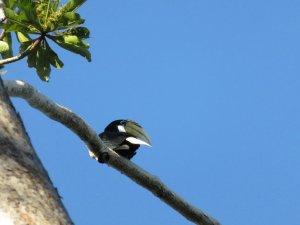
Blyth's Hornbill
A photo of a hornbill in Papua New Guinea- BirdMeister01
- Media item
- blyth\'s hornbill papua new guinea rhyticeros plicatus
- Comments: 4
- Category: Asia, Australia & Pacific Islands
-
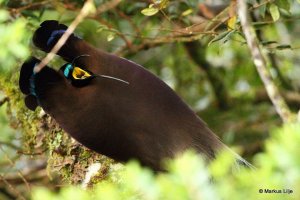
male Brown Sicklebill by Markus Lilje
This, believe it or not, is a bird - a displaying male Brown Sicklebill to be precise. Belonging to the bird-of-paradise family, this fairly common forest species dwells in the lush, humid mountains of New Guinea, and uses this fancy display posturing to hopefully woo the attention of...- Rockjumperbirdingtours
- Media item
- epimachus meyeri male brown sicklebill by markus lilje papua new guinea
- Comments: 1
- Category: Asia, Australia & Pacific Islands
-
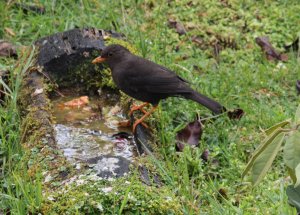
Island Thrush
PNG Island Thrush- dandsblair
- Media item
- island thrush png kumul papua new guinea
- Comments: 0
- Category: Asia, Australia & Pacific Islands
-
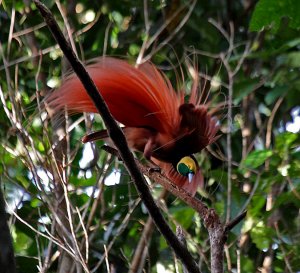
Male Raggiana Bird-of-Paradise displaying
The Raggiana Bird-of-Paradise is a fitting national bird of Papua New Guinea (PNG): it is widespread and failry common throughout. This bird was shot just outside the capital Port Moresby, at the excellent Varirata National Park, where they can regularly been seen in spectacular display. More...- Sam Woods
- Media item
- bird-of-paradise papua new guinea paradisaea raggiana raggiana sam woods varirata national park
- Comments: 5
- Category: Asia, Australia & Pacific Islands
-
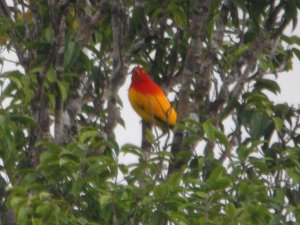
Flame Bowerbird
Shame the photo doesn't do justice to the birds striking plumage. Even with 22 birds of paradise this was the bird of the trip for me.- Mark Harper
- Media item
- boystown road kiunga papua new guinea sericulus ardens
- Comments: 1
- Category: Asia, Australia & Pacific Islands
-
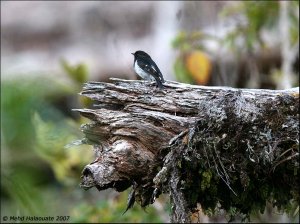
Mountain Robin for DB
- mehdhalaouate
- Media item
- baliem valley mountain robin petroica bivittata papua new guinea subalpine robin
- Comments: 7
- Category: Asia, Australia & Pacific Islands
-
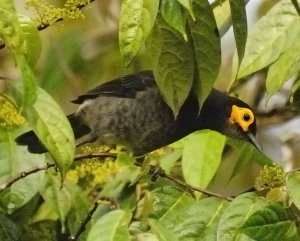
Smoky Honeyeater
Taken at Ambua Lodge, Southern Highlands, Papua New Guinea- Dave Clark
- Media item
- ambua lodge melipotes fumigatus papua new guinea southern highlands
- Comments: 3
- Category: Asia, Australia & Pacific Islands
-
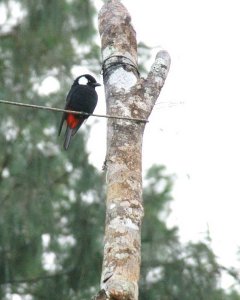
Mountain Peltops
Photographed at Ambua Lodge, Southern Highlands, Papua New Guinea- Dave Clark
- Media item
- mountain peltops papua new guinea peltops montanus
- Comments: 1
- Category: Asia, Australia & Pacific Islands
-
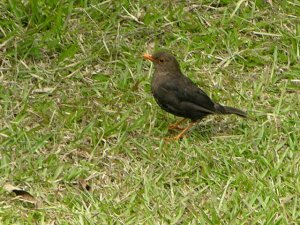
Island Thrush (New Guinea)
- djringer
- Media item
- enga province island thrush kumul lodge papua new guinea turdus poliocephalus
- Comments: 3
- Category: Asia, Australia & Pacific Islands



